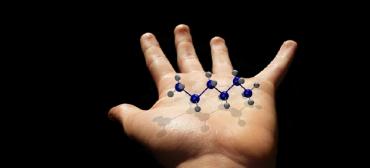Signal-Averaged Electrocardiogram (SAECG)
(Signal-Averaged ECG, Signal-Averaged EKG, SAECG)
Procedure overview
What is a signal-averaged electrocardiogram?
An electrocardiogram (ECG or EKG) is one of the simplest and fastest procedures used to evaluate the heart. Electrodes (small, plastic patches) are placed at certain locations on the chest, arms, and legs. When the electrodes are connected to an ECG machine by lead wires, the electrical activity of the heart is measured, interpreted, and printed out for the doctor's information and further interpretation.
A signal-averaged electrocardiogram is a more detailed type of ECG. During this procedure, multiple ECG tracings are obtained over a period of approximately 20 minutes evaluating several hundred cardiac cycles to detect subtle abnormalities that increase risk for cardiac arrhythmias. These subtle abnormalities are usually not detected on a plain ECG. A computer captures all the electrical signals from the heart and averages them to provide the doctor more detail regarding how the heart’s electrical conduction system is working.
Signal-averaged ECG is one of several procedures used to assess the potential for dysrhythmias or arrhythmias (irregular heart rhythms) in certain medical situations.
Other related procedures that may be used to assess the heart include resting electrocardiogram (ECG), Holter monitor, exercise electrocardiogram (ECG), cardiac catheterization, chest X-ray, computed tomography (CT scan) of the chest, echocardiography, electrophysiological studies, magnetic resonance imaging (MRI) of the heart, myocardial perfusion scans, radionuclide angiography, and cardiac CT scan. Please see these procedures for additional information.
The heart's electrical conduction system
The heart is, in the simplest terms, a pump made up of muscle tissue. The heart's pumping action is regulated by an electrical conduction system that coordinates the contraction of the various chambers of the heart.
| |
| Click Image to Enlarge |
An electrical stimulus is generated by the sinus node (also called the sinoatrial node, or SA node), which is a small mass of specialized tissue located in the right atrium (right upper chamber) of the heart.
The sinus node generates an electrical stimulus regularly at 60 to 100 times per minute under normal conditions. This electrical stimulus travels down through the conduction pathways (similar to the way electricity flows through power lines from the power plant to your house) and causes the heart's lower chambers to contract and pump out blood. The right and left atria (the two upper chambers of the heart) are stimulated first and contract a short period of time before the right and left ventricles (the two lower chambers of the heart).
The electrical impulse travels from the sinus node to the atrioventricular node (also called AV node), where impulses are slowed down for a very short period, then continue down the conduction pathway via the bundle of His into the ventricles. The bundle of His divides into right and left pathways to provide electrical stimulation to the right and left ventricles.
This electrical activity of the heart is measured by an electrocardiogram. By placing electrodes at specific locations on the body (chest, arms, and legs), a graphic representation, or tracing, of the electrical activity can be obtained. Changes in an EKG from the normal tracing can indicate one or more of several heart-related conditions.
Reasons for the procedure
Reasons your doctor may request a signal-averaged ECG may include, but are not limited to, the following:
-
To assess risk for potentially fatal heart arrhythmias in patients with known heart disease including coronary artery disease, heart failure, or after a heart attack
-
To evaluate other signs and symptoms which may be heart-related, such as fatigue, shortness of breath, dizziness, or fainting
-
To help identify irregularities in heartbeats that can lead to sudden cardiac death in patients at risk, such as those with hypertrophic cardiomyopathy (an abnormal thickening of heart muscle)
-
For further evaluation of dysrhythmias or arrhythmias noted on resting ECG
There may be other reasons for your doctor to recommend a signal-averaged ECG.
Risks of the procedure
A signal-averaged ECG is a quick, noninvasive method of assessing the heart’s function. Risks associated with ECG are minimal and rare.
Prolonged application of the adhesive electrode patches may cause tissue breakdown or skin irritation at the application site.
There may be other risks depending on your specific medical condition. Be sure to discuss any concerns with your doctor prior to the procedure.
Certain factors or conditions may interfere with or affect the results of the test. These include, but are not limited to, the following:
-
Obesity, pregnancy, or ascites (accumulation of fluid in the abdomen)
-
Anatomical considerations, such as the size of the chest and the location of the heart within the chest
-
Movement during the procedure
-
Exercise or smoking prior to the procedure
-
Certain medications
-
Electrolyte abnormalities, such as too much or too little potassium, magnesium, and/or calcium in the blood
Before the procedure
-
Your doctor or the technician will explain the procedure to you and offer you the opportunity to ask any questions that you might have about the procedure.
-
Generally, fasting is not required before the test.
-
Notify your doctor of all medications (prescribed and over-the-counter) and herbal supplements that you are taking.
-
Notify your doctor if you have a pacemaker.
-
The area(s) where the electrodes are to be placed may be shaved.
-
Based on your medical condition, your doctor may request other specific preparation.
During the procedure
A signal-averaged ECG may be performed on an outpatient basis or as part of your stay in a hospital. Procedures may vary depending on your condition and your doctor’s practices.
Generally, a signal-averaged ECG follows this process:
-
You will be asked to remove any jewelry or other objects that may interfere with the procedure.
-
You will be asked to remove clothing from the waist up. The technician will ensure your privacy by covering you with a sheet or gown and exposing only the necessary skin.
-
You will lie flat on a table or bed for the procedure. It will be important for you to lie still and not talk during the procedure, so as not to interfere with the tracing.
-
If your chest is very hairy, the technician may shave small patches of hair, as needed, so that the electrodes will stick closely to the skin.
-
Electrodes will be attached to your chest, abdomen, and back.
-
The lead wires will be attached to the skin electrodes.
-
Once the leads are attached, the technician may key in identifying information about you into the machine's computer.
-
The EKG will be started. Generally, it will take about 20 minutes to obtain the necessary ECG information.
-
Once the tracing is completed, the technician will disconnect the leads and remove the skin electrodes.
After the procedure
You should be able to resume your normal diet and activities, unless your doctor instructs you differently.
Generally, there is no special care following a signal-averaged ECG.
Notify your doctor if you develop any signs or symptoms you had prior to the test (for example, chest pain, shortness of breath, dizziness, or fainting).
Your doctor may give you additional or alternate instructions after the procedure, depending on your particular situation.
Related Questions
Mantoux Test Query
- 3853 Days ago
- Tests & Procedures
My Rheumatoid Factor is - H 74 IU/mL
- 4012 Days ago
- Tests & Procedures
Suffering from piles
- 4133 Days ago
- Tests & Procedures
widal positive
- 4247 Days ago
- Tests & Procedures
Whitish viscosity
- 4256 Days ago
- Tests & Procedures
LINAC procudure, 3DRT and IMRT
- 4270 Days ago
- Tests & Procedures
Ecg of heart showed T wave changes
- 4311 Days ago
- Tests & Procedures
CT Coronary Angiography
- 4295 Days ago
- Tests & Procedures





















